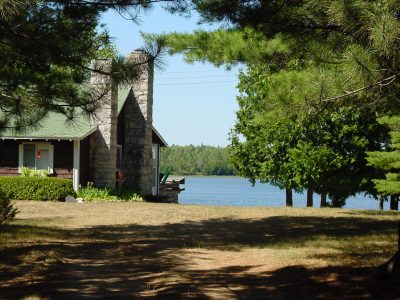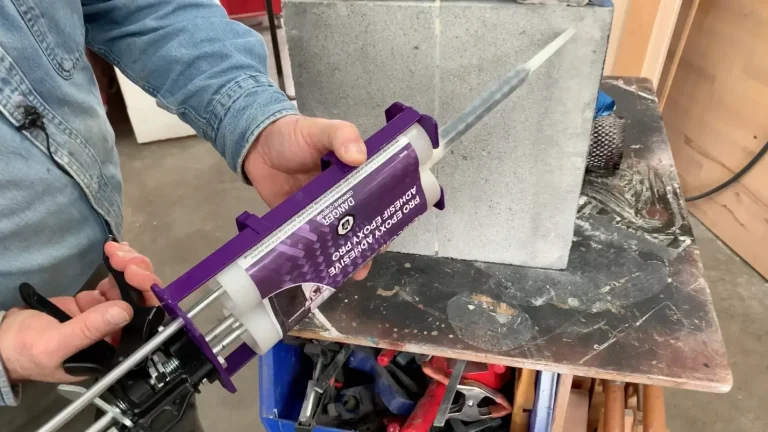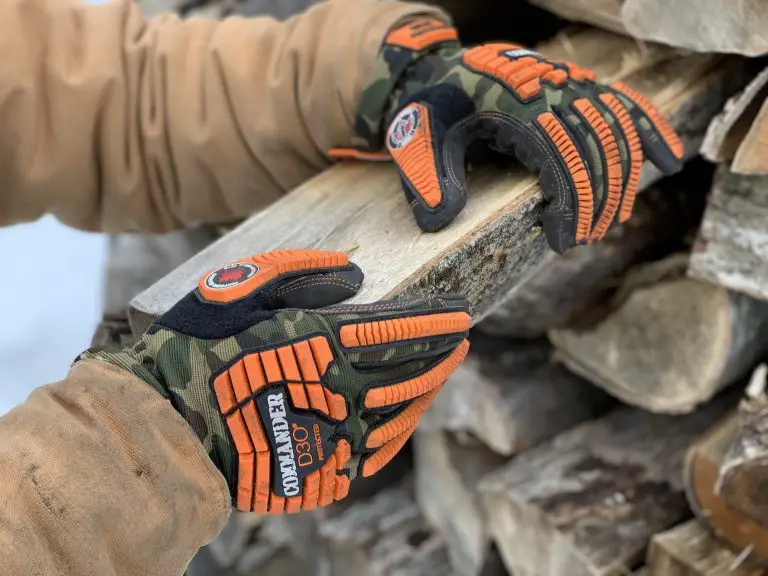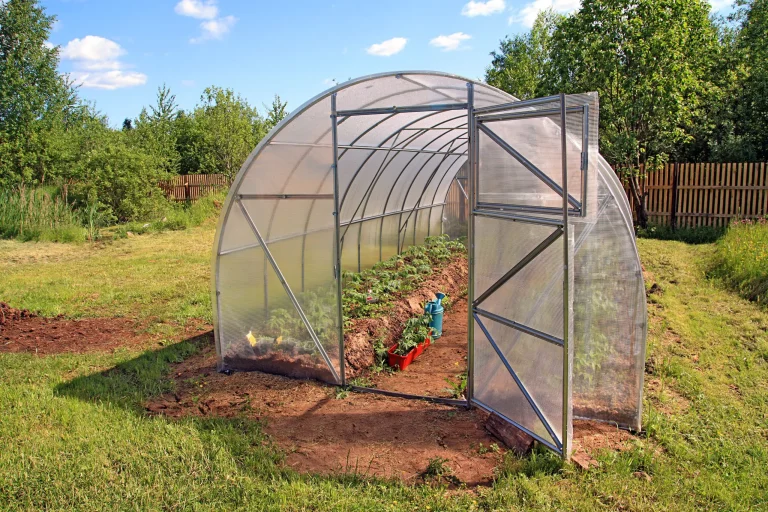This is the seventh chapter in my book The Bailey Line Road Chronicles, the 30-year story about moving from the city to live a modern homestead life deep in the country on Manitoulin Island, Canada. Missed Chapter Six? Click here to read it.
As I explained before, we bought our 90 acre property through a real estate agent named Kitty Grigull. It was 1985 then, and Kitty was one of the first real estate agents on Manitoulin. Not long before, people simply sold their land directly to a buyer. The only go-between might have been a farmer friend who happened to know that “Joe” had some property that he might like to sell, and “John” was looking to buy. Even now there are few brand name real estate agents on Manitoulin.
Kitty’s office was an empty storefront on the main street of Gore Bay, and when Mary and I went to see her after spotting a typewritten Property For Sale notice in her store window, Kitty didn’t even have a desk. There were just three chairs in the middle of an empty building. As we sat there, Kitty actively tried to discourage us from buying land at all.
“There’s no work here”, she explained in her German accent. “Young people your age who grew up on Manitoulin all leave when they finish high school. What makes you think you can make a living on the Island?”
This was the kind of thing we’d hear a lot at first, then less as years went on. One hardened old vulgar farmer I met a few years later put it bluntly: “Why would you move to a hell hole like Manitoulin Island?”
After 30 years here, we don’t get those kind of comments any more, but it’s amazing how discouraging they were at the time. It’s also amazing how all the naysayers were so thoroughly wrong about the economic prospects here on the Island. I’ve had no trouble earning a living for a family of five kids, and my oldest son Robert, now 27 years old and a father, has lots of great work, too.
As usual with real estate transactions everywhere, I didn’t know who was on the sell side of the process Kitty led us through until the deal was almost done. As it turned out, the owners we bought from were Norm and Rita Henery, two teachers living in London, Ontario. They’d soon become friends. Back in 1973, the Henerys bought what would become our property, along with all the other land holdings of the man who’d become our neighbour – Ivan Bailey. The only land he kept was the 8 1/2 acres his house sat on. Old timers on Manitoulin often owned a lot of land because it was so cheap years ago. By his own admission, Ivan earned a dollar a day for most of his working life, yet he ended up owning nearly a thousand acres of land when he sold almost all of it to the Henerys in an unusual way.
Being teachers, Norm and Rita had summers off work, so in August of 1973, they decided to go camping with their two boys, Hanse and Neil. Here in Ontario, Canada, a place called Algonquin Park is one of the largest and most renowned camping spots in the province. The Henerys had never been to Algonquin before, so they packed up and drove the 6 hours to do some quiet camping in the great outdoors. The thing about Algonquin is that it supports two kinds of camping. The interior of the park is a nature reserve. You can’t drive there, only paddle in by canoe. No motors are allowed and no hunting. It’s this inner part of Algonquin that’s earned the legendary reputation for the place, but you can’t get there on wheels. What the Henerys discovered was the car camping part of Algonquin – something completely different. At certain points around the perimeter of the park there are sites where you can rent a spot for your tent next to other people renting spots for their tents. It’s kind of like a well ordered refugee camp, but with many more vehicles than refugees usually have. Shocked and disappointed by the reality of camping cheek-to-jowl with people in a kind of outdoor subdivision, the Henerys got in their car and started driving. They didn’t know where they were going, but they were looking for something quiet and nice. After another 5 or 6 hours on the road, they found themselves on Manitoulin Island for the first time, heading west. The further they drove, the smaller the road got. Eventually they found themselves on a township road narrow enough that two cars couldn’t pass each other. This road (one day to be called Bailey Line Road) then got smaller and twistier and hillier. With no place to turn around, they just kept on bumping along this forested cart track for a mile or so. Eventually, they came to a little body of water called Lorne Lake, with a man standing next to the cart track near some cabins with the sun twinkling through the trees off the water.
“Excuse me. Can you tell me where we are?”, Norm asked through the rolled down window.
“Do you want to buy this place?”, the man asked.
Not the usual sort of introductory conversation from a stranger, but it worked. Sounds crazy, but this is how the Henerys came to be the proud owners of a thriving tourist camp plus hundreds of acres of forest and farmland on an island they’d never been to before. Very near Lorne Lake, a 90 acre piece of that land would be ours twelve years later. Over the next few days the Henerys settled on a price to buy Ivan’s entire kingdom.
Earlier the previous year, Ivan suffered a heart attack and that got him thinking of selling. Perhaps he’d had a bad day before the Henerys drove up and that’s why he offered to sell to complete strangers. In the end, Ivan lived another 22 years, so there really was no rush to sell.
So what, exactly, did the Henery’s buy from Ivan? The biggest part of the purchase was Moonbeam Camp. That was a collection of six tourist cabins that Ivan had built himself in the 1940s, and it was the place the Henerys stumbled upon as they fled from Algonquin park. Back as WWII ended, hosting summer tourists was the new big moneymaker on Manitoulin. In a world with no air conditioning and no all-inclusive tropical vacations to lure people south each winter, cool, fresh, northern areas like Manitoulin looked like heaven to the hot, sweating masses slaving away in the cities of southern Ontario and the northern US during summer. Ivan happened to own the nicest land around a little pear-shaped lake called Lorne Lake, and he decided to cash in on the tourist boom that kicked in as WWII ended.

Like many rural men of that time, Ivan had more energy than money, and it was his energy that fueled his ambition to own and operate a tourist camp. The property he owned at the south end of Lorne Lake included a lot of cedar trees, so he cut these down with a hand saw, hauled them to a local sawmill, then hauled the lumber back to use for building the cabins. He did this with no help except from a single workhorse named Champ.
“I couldn’t have built those cabins without Champ”, Ivan told me once. “I leaned two stout planks on the wagon and the ground to make a ramp, then I’d hitch Champ to a log. He’d walk and stop and ease back just by my voice as we rolled the logs up onto the wagon”, Ivan remembered. “No reins at all. It was like losing my right arm when I had to get rid of him.”
These days it would be illegal to build any kind of structure using ungraded white cedar lumber for studs, rafters and floor frames, but Ivan’s cabins have stood the test of time, despite his very frugal use of wood. The cabins are about 16 feet wide, and somehow the 2×4 cedar rafters haven’t sagged much even though some are 36” apart. Five of Ivan’s six cabins are still standing and in good condition today. Only one is gone because it caught fire in 2005. Inscriptions written on the open 2×4 wall studs and cedar planking still tell the tale of dozens of families who came and kept coming to Moonbeam Camp over the years. Names, dates, number of fish caught, number of deer shot by people from all over tell the story of the Moonbeam history. Many families from the US would drive up from Ohio, Indiana and New York each year to get a breath of fresh, Manitoulin air each summer.
Ivan ran Moonbeam for more than 30 years with his wife, Dorothy and their only child, Darlene. People who came to stay at the camp had to cook for themselves, but Ivan and Dorothy provided fresh bedding and linens, kept the place clean and operational, and helped visitors pack and freeze the fish they caught.
“I cut more firewood for the camp than I ever did to heat my house for winter”, Ivan told me. “Every family wanted to burn a cookstove when they were here. I cut, split and stacked cedar under each cabin so they could have fun burning the stoves.”
Lorne Lake is only 1 1/2 miles long and 3/4 mile at the widest spot, but it somehow supported massive and ongoing fish catches for decades. There were either no catch limits or very generous limits back then, and with an eager new party in each cabin each week, the fishing pressure was huge. I’m told Lorne Lake was stocked with young fingerlings back in the day, but still, it’s always been a remarkable lake for productivity.
Financially speaking, Ivan was something of a sly man. Although he sold his land to the Henerys, in the fine print of the deal he retained what was called “the hunting rights”. These were supposed to stay with him and his heirs no matter who owned the properties in the future. The Henerys didn’t know what this meant at first, but they soon found out.
Hunting on Manitoulin is something of a business for some people. Ever since the settlers cleared land for farming, there has been a massive population of whitetail deer here. The Island offers good enough hunting that people will pay for the chance to bag a buck. Each year 4000 to 5000 deer are shot, yet the population still stays at crazy-high levels. A friend of mine who owns an autobody shop tells me that 25% of his business is repairing vehicles that have hit deer. By retaining the hunting rights, Ivan was still allowed to take money from hunters to hunt on land that he didn’t actually own any more. Hunters arrived in mid September to shoot ducks, geese, rabbits and ruffed grouse, but the big moneymaker happened in November during deer season.
Norm and Rita were surprised to find hunters crawling all over “their” land each fall, but they decided to turn a submissive eye to the situation for years. Eventually, as I examined the original deeds a few years after Ivan died, I discovered that the lawyer had made an error back in 1973. He tried to make the retention of the hunting rights on the Moonbeam Camp property stronger for Ivan by having him officially grant the Henerys the rights, then having the Henerys turn around and officially grant them back to Ivan as part of settling the sale and deed transfer. But the lawyer accidentally reversed the order of filing the paperwork. On paper the Henerys transferred the hunting rights to Ivan first (rights they didn’t have yet), then Ivan transferred the rights to the Henerys as a final step. When it was pointed out that Ivan had granted the hunting rights to the Henerys and he didn’t actually have the authority to allow hunters to hunt on the Moonbeam property, the side business that continued after Ivan’s death with his heirs stopped. Ivan’s hunters still continued to hunt on other properties that the Henerys bought from Ivan and had since sold (including my own), but this would stop eventually, too.
Norm and Rita continued their teaching careers in the city, but they also ran Moonbeam Camp after buying it from Ivan. They’d drive the ten hour trip to Manitoulin to work on weekends getting the camp ready for guests before school ended, then spent summers living in one of the cabins and doing all the things Ivan used to do while guests stayed in the other five. After twelve years of teaching for 10 months a year and running Moonbeam for two, the Henerys shut down operations and sold four of the cabins privately to people who’d eventually become good friends of ours. The Henerys kept two of the cabins for themselves. Lorne Lake and Moonbeam Camp is a few minutes walk from our property and the year I bought my property one of the cabins was sold to Mike and Alice Ogden – another teaching couple. Three of the cabins were sold to Phil Dean – a chemistry professor – and his wife Midge Dean.
By the time The Shed was built, Mary and I had become good friends with all three families down at the lake. The Ogdens, Deans and Henerys often had us down for fish fries or spaghetti dinners at a time in our lives when any normal, hot meal was like heaven. We became fast friends, but it wasn’t long before our friendship with the Ogdens was put to a serious test by my dog King.
King may have been the world’s worst pure bred golden retriever. He was originally Mary’s dog and delivered a mixture of troubles from the day he was a puppy. King was an impulse purchase by Mary’s parents. Shortly after arriving in Canada, the dog they brought from Brazil – a St. Bernard named Tammy – got bone cancer and died. I was dating Mary at the time and her grief over Tammy prompted her parents to rush out and buy a puppy from the first litter they found advertised in the newspaper. Some of the puppies in the litter were sick with facial lesions, but that wasn’t enough to prevent a purchase. King soon came down with the same facial lesions and I often helped apply salve from the vet when I was visiting at Mary’s house. This continued for months as King began to show he was a rather aggressive dog, too. He’d go crazy if you got any closer than six feet to his food bowl, and he didn’t take kindly to kids or strangers. Not long after he reached full size, King also began having epileptic seizures. Like I said, King was not the best dog in the world. His aggression came to a head when King bit the friend of Mary’s brother and drew serious blood. The kid was trying to take a ball away from King and the bite was enough to put the dog on death row. Mary’s parents weren’t going to keep any dog that bit. King had a few days left to live when I happened to come across a photo of him that changed everything. King was a beautiful looking animal and seeing him in the photos got me thinking how much I’d always wanted a dog. My parents agreed, so King moved to my place in 1982, spared from a premature death.
The day King bit again was a warm, sunny day in July 1986. I was working on The Shed when Mike and Alice Ogden’s youngest son, JM, had come over to see how the work was going. JM was a quiet and polite 7 year-old and he’d come over a few days earlier, but Ivan had sent him away promptly because he didn’t like the distraction of having a kid looking on. Ivan was pretty old-school about kids being seen but not heard. Even seeing a kid wasn’t okay with Ivan when he was working. The day of the bite, Ivan wasn’t helping me, so I was happy to have JM watch and ask the odd question.
I’d gone around to the other side of The Shed to clean up some scrap wood when I heard King go savage and JM scream. The boy had tried to pull a stick out of King’s mouth and the next thing there was a big, bloody gash in JM’s forearm. It was deep and ugly. JM was a plump boy at the time, and little round globules of loose fat were mixed with the blood as it ran out. I’d never seen human fat before. The bright white colour of the fat was a surprise.
Mary rushed JM to the medical clinic in the nearby town of Gore Bay for stitches and I had the unpleasant task of telling Mike and Alice that my dog had just hurt their son badly. That was it for King as far as I was concerned. I was digging out my .22 rifle and gearing up mentally to use it, but Mike and Alice wouldn’t hear of it.
“Shooting the dog is the right thing to do”, I explained. “He’s already bitten before. He’s too dangerous.”
“No way”, said Mike. “King’s a beautiful dog and you shouldn’t put him down. JM was probably doing something he shouldn’t have done.”
As you can tell, Mike and Alice are certainly dog people. In the end, King’s life was spared and he lived for another 9, bite-free years before old age caught up with him. He was always a good dog to me too, waking me up every morning at 7am by nuzzling me in the face as I slept on a fold-up cot in The Shed. We were constant companions during the time I mostly lived and worked alone in the early years. King also got better around his food bowl, thanks to some training I stumbled upon.
As fierce as King would be if you got anywhere near his food, he was terribly afraid of the sound of a gun shot. Even the relatively quiet sound of a .22 sent him shivering and quaking. To make him easier going around his food (and less likely to bite again), I’d tie King to a chain, then tie a string around a bowl full of his favourite food. Pulling the bowl away while he ate sent King into a snarling rage with bared teeth and hair standing up on his back. He looked just like an attack dog at full throttle. Immediately after triggering his temper by pulling the bowl away, I’d shoot a gun into the ground, frightening him with the sound. After several of these sessions a week for a few months, King associated vicious behavior with a sound he didn’t like. Eventually he progressed to the point where he never acted aggressively around food again. I could even put my hand on the bowl while he was eating with no trouble.
The end came for King when I found him wandering aimlessly down Bailey Line Road a mile from our house on a rainy, cold fall day in 1995. At 14 years old, he was clearly getting on by then. Normally he’d never wander off but he was failing in mind and body. On November 11, 1995, I buried King in Ivan’s “dog graveyard”. This was a spot on a little sandy rise in a red pine forest that Ivan had used for burying the many dogs he owned since the 1920s. One of his dogs, a legendary hound named Sport that Ivan used for deer hunting was there. This floppy-eared hound had a 22” ear spread from tip-to-tip. Each of Ivan’s dogs has a small gravestone he made out of limestone, and King has one I made, too.
“I wouldn’t mind being buried in the dog graveyard myself”, Ivan told me once. “It’s the nicest spot I know of around here.” In the end, Ivan was buried in our local township graveyard which is a pretty nice spot, too. The oldest stone there is for a person born in 1816.
By this stage in our Manitoulin adventure I was starting to see something I couldn’t see before. My original impulse had been to build a nice home and life for myself in the country. But what I found when I got here was a sense of informal community and very local history. There were the Ogdens, Deans and Henerys down at the lake – people who’d do anything for us. There were also the stories of the olden days Ivan used to tell about all kinds of things. There was the hand-dug well lined with stones that used to be in our second field, and the main Indian trail that used to run right across what’s now our third field in the days when the Native people here lived traditionally and travelled on foot. There were stories of how everyone in the country stocked up on food in the fall because no one ever travelled the 12 miles to Gore Bay in winter. Cars, such as there were before WWII, were put up on blocks each fall and stayed there until the following May because roads were never plowed to get rid of snow. People my own age were still attending the one-room schoolhouse at the top of Bailey Line Road in the early 1970s.
As I slowly came to know the land I now owned, I discovered how our nearly-stone-free fields used to have so many stones in them you could step from one to the other. “I spent summers picking those stones as a boy and throwing them along the edges of your second field”, Ivan explained one day as we walked along a pile of them. “When my dad plowed the field one fall he brought up just as many stones again. So much work. It broke your heart to see so many new stones come up.” With all that labour invested to making land that can grow food, who can just let it grow back into juniper bushes and poplars?
I also got to know more about what Ivan called The Spring. That’s a rock crack in our third field where water is never far from the surface. It started out as a wet spot in the field that Ivan dug out as a young man. He found the source of water, and used dynamite to blast it out before building a stone crib around the crack to keep the soil out. I see now that part of what I need to do here is to keep this little patch of farmland in the middle of a forest producing food. It’s a kind of sacred trust established by the pioneers and passed on to different hands over the decades, and now to me for a while. So many people in the past had contributed something to my land, and with The Shed built, it was my turn to do something that would last. And like so much of what happens here on Manitoulin, it all came down to limestone.
Want to help make The Bailey Line Road Chronicles a complete and published book? I’m looking for readers who will help me finish getting the story on paper. Just a small contribution each month gets you your own copy of the complete story when it’s done, plus your name on “The Patrons” page. Click here for details about how you can help it all happen. Click here for Chapter Eight of this true story.













